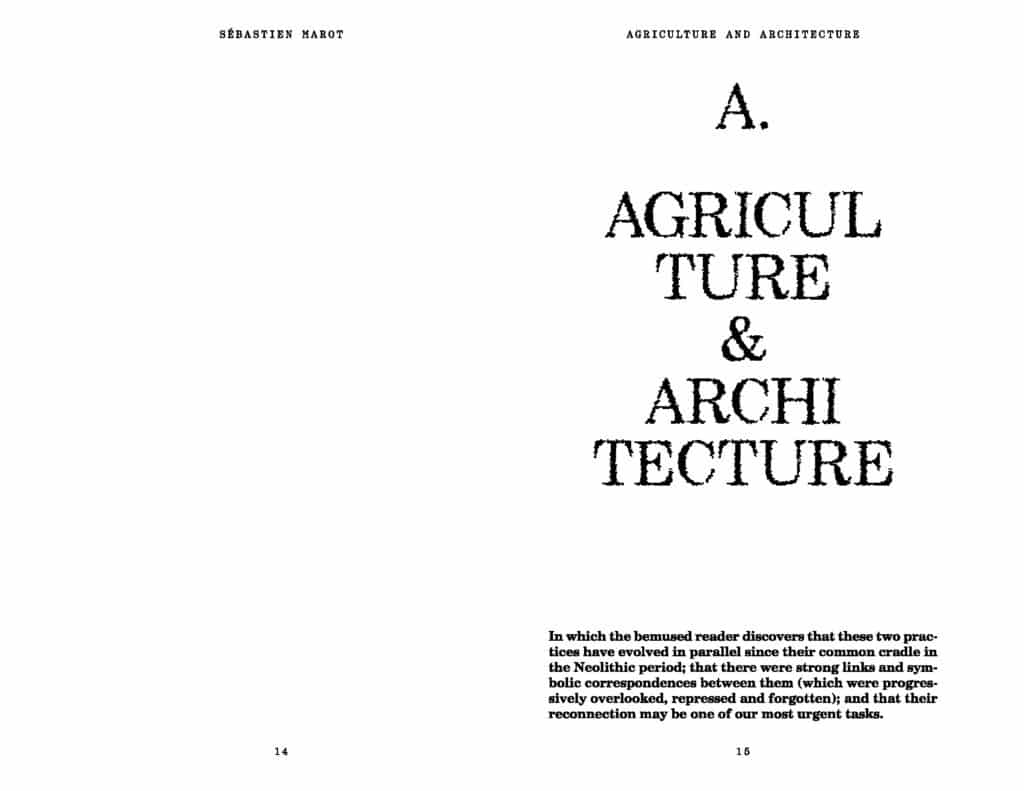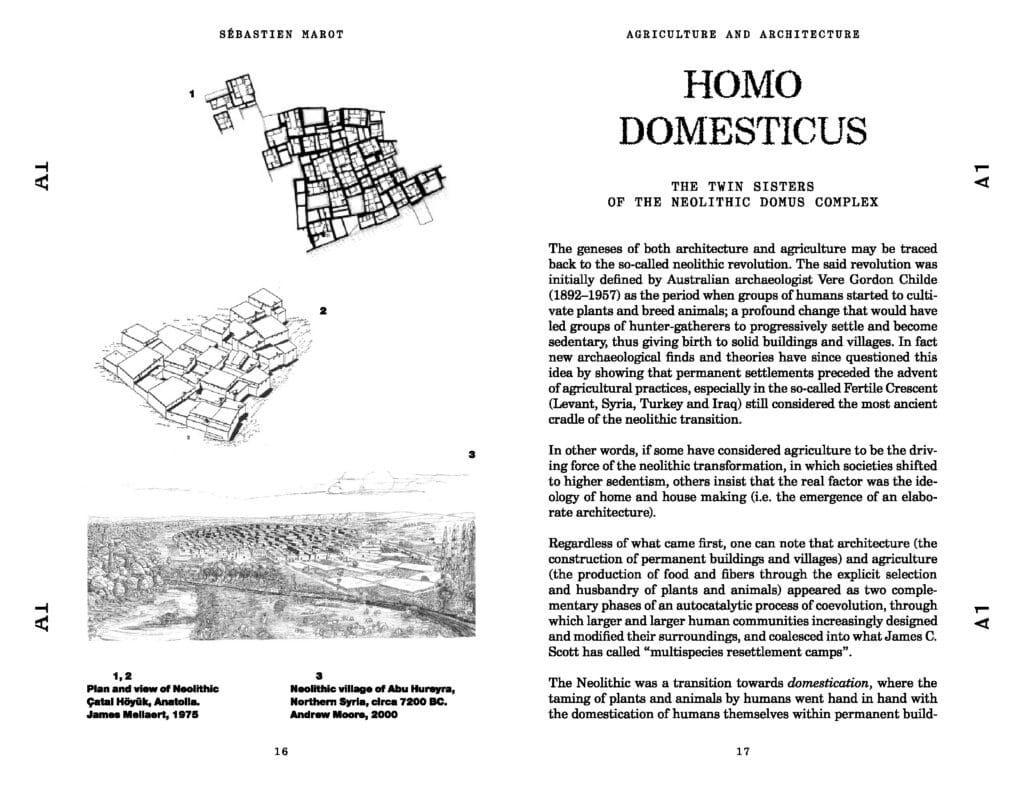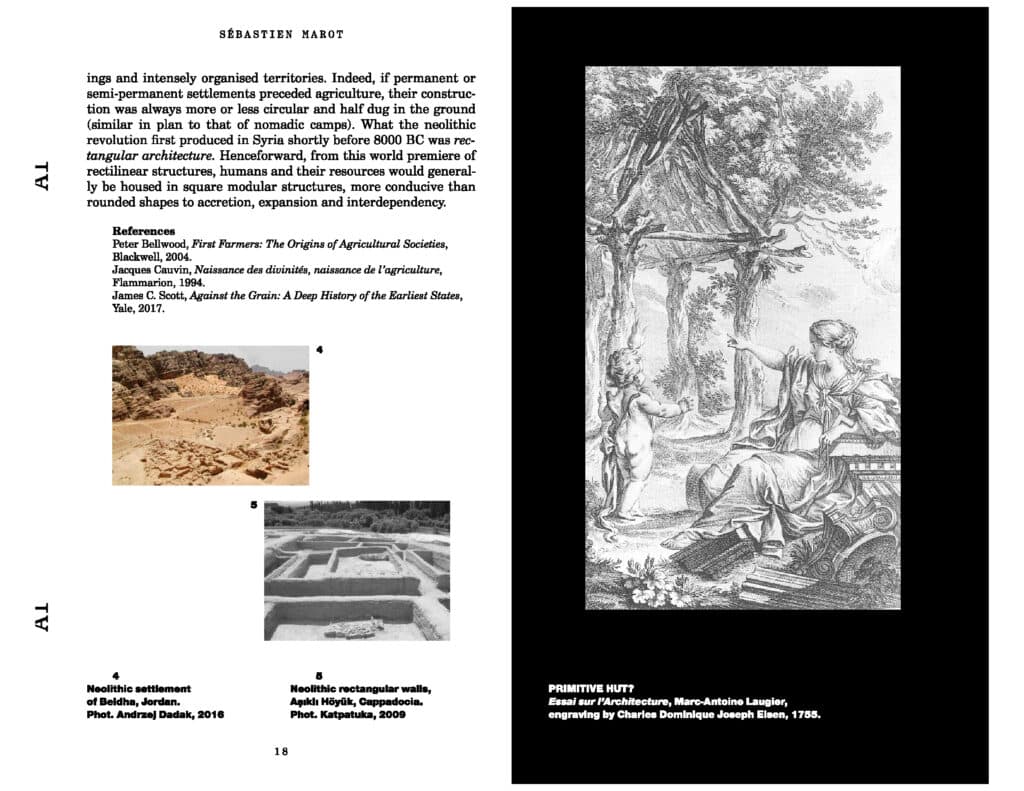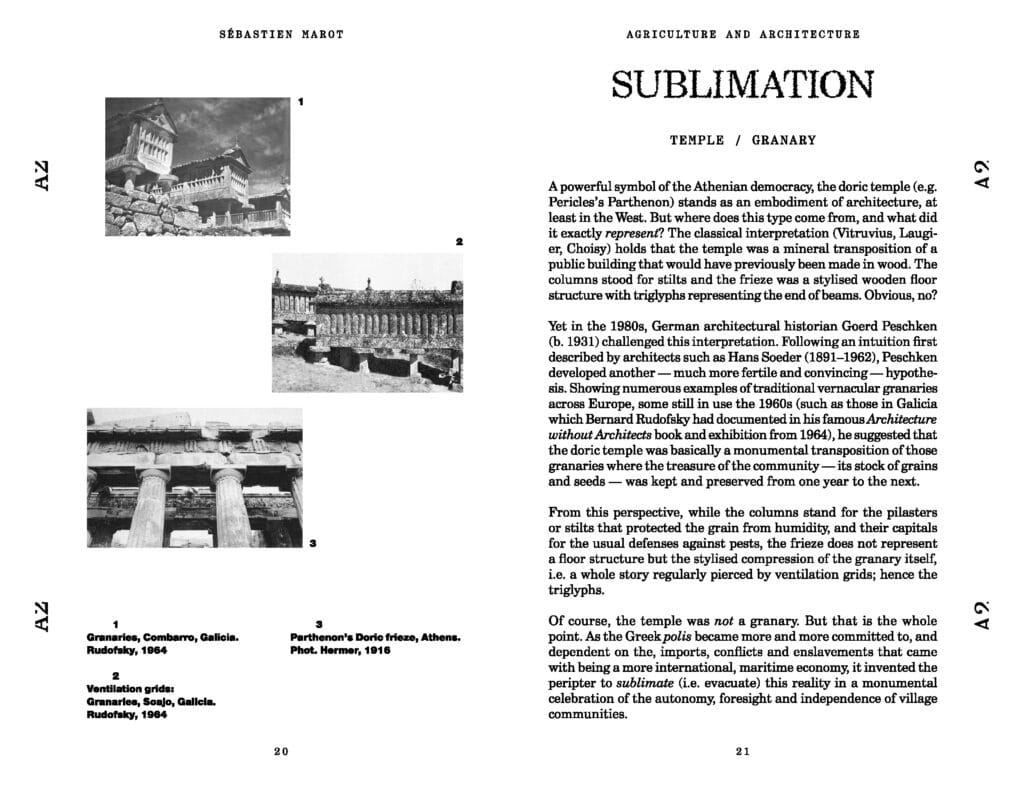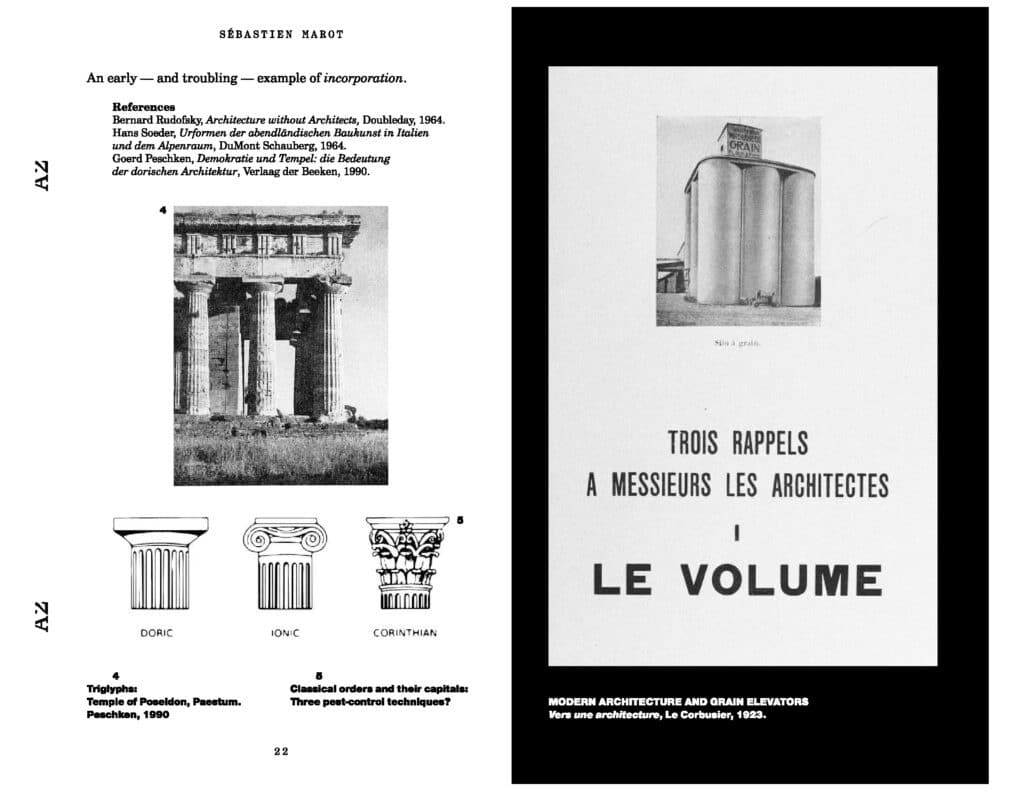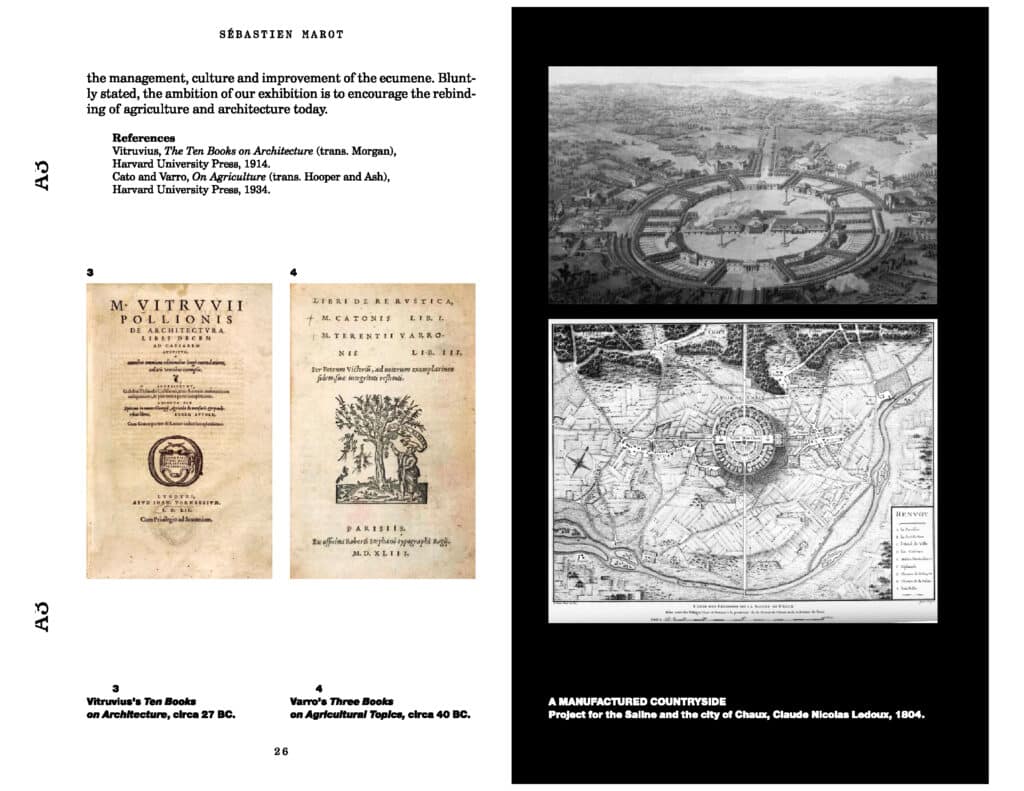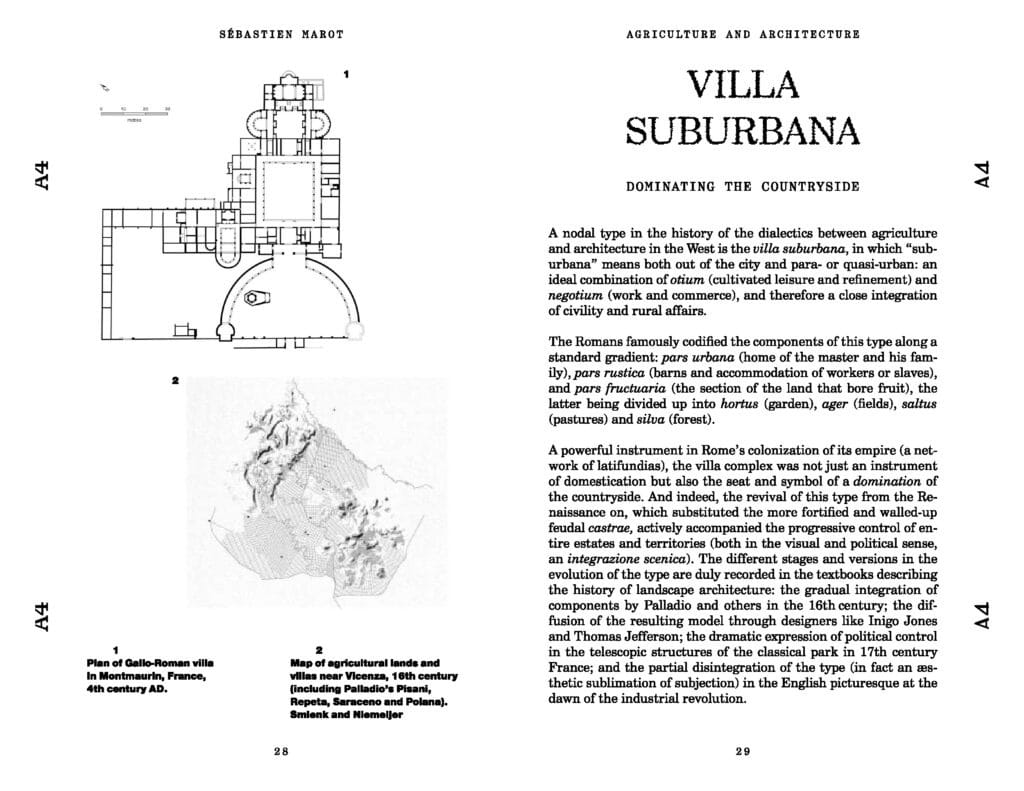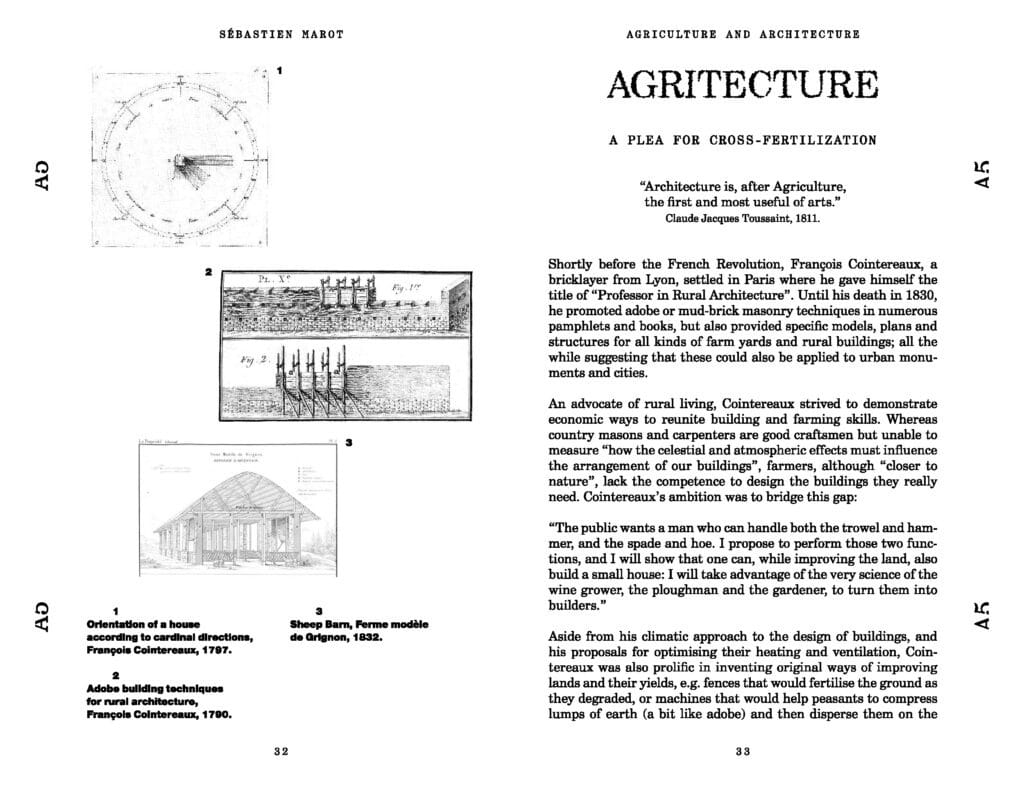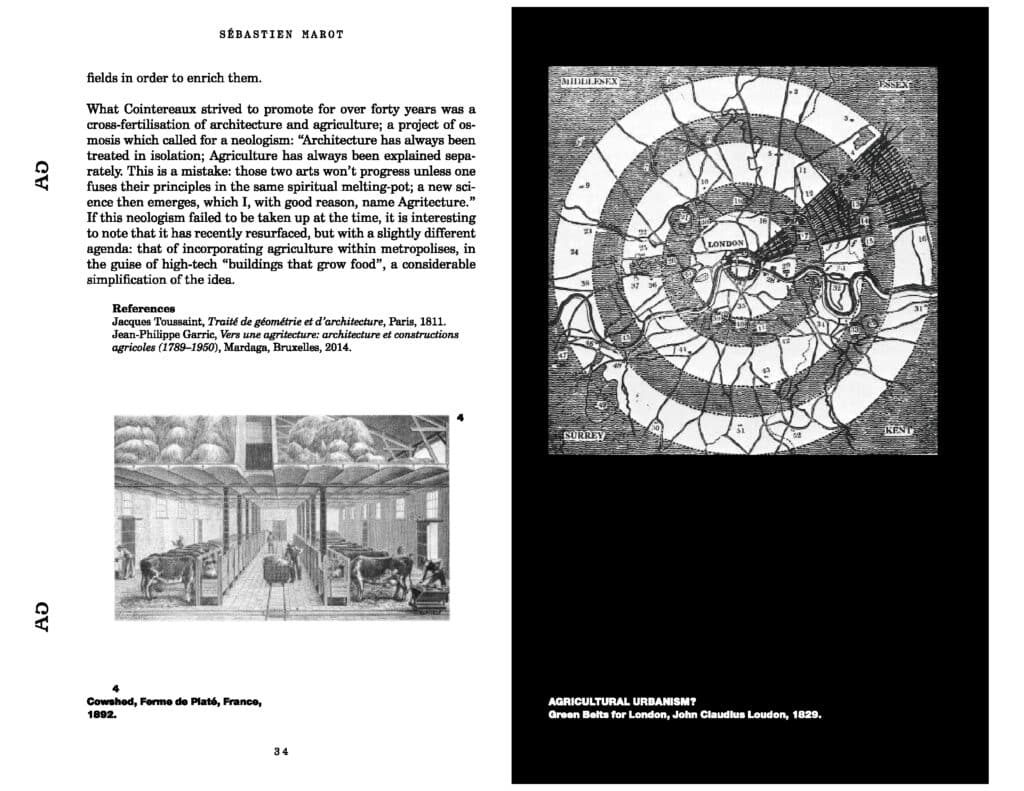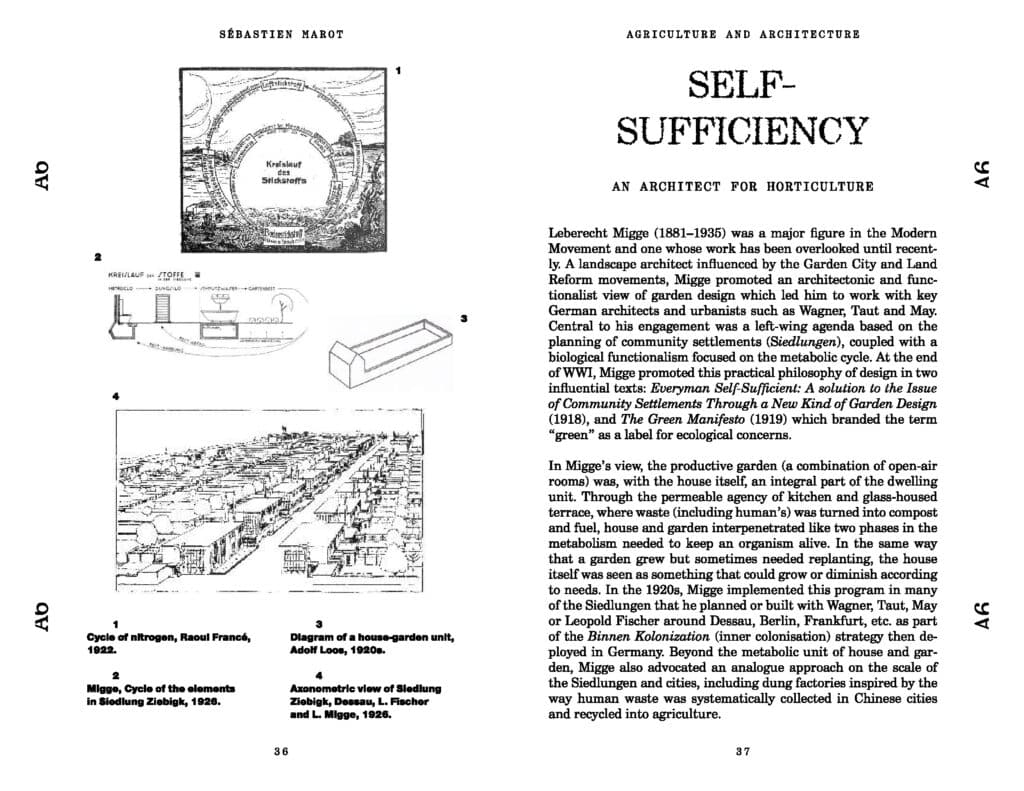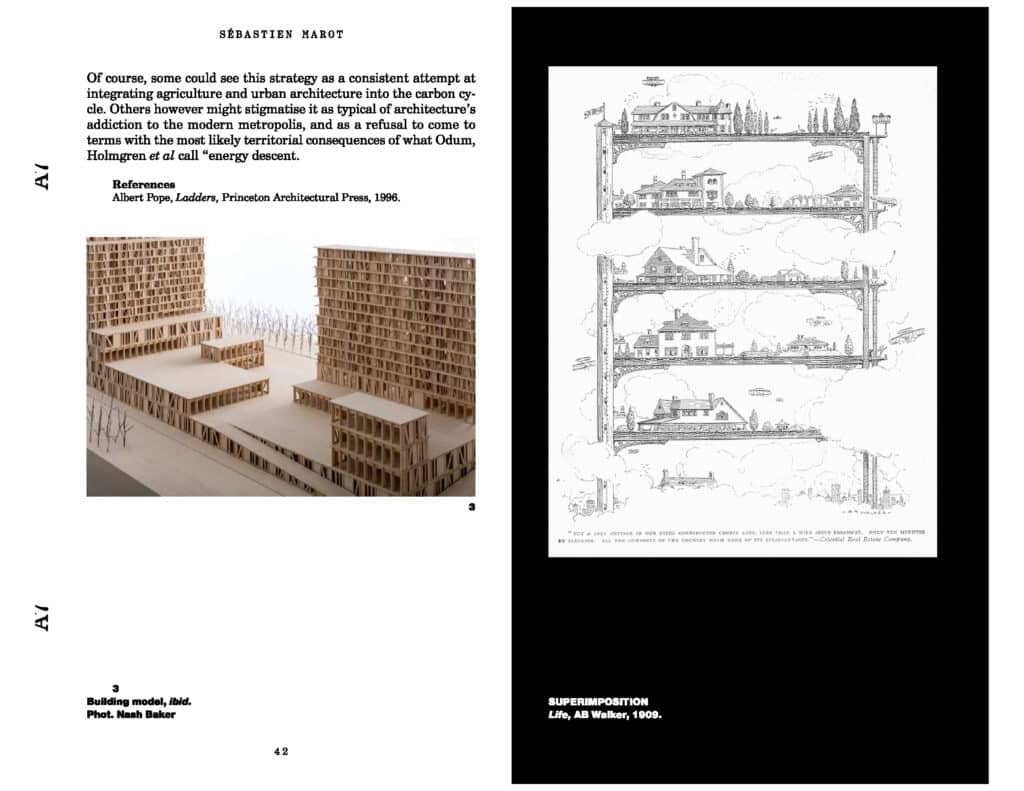Sébastien Marot’s Taking The Country’s Side (2019): Review & Excerpt
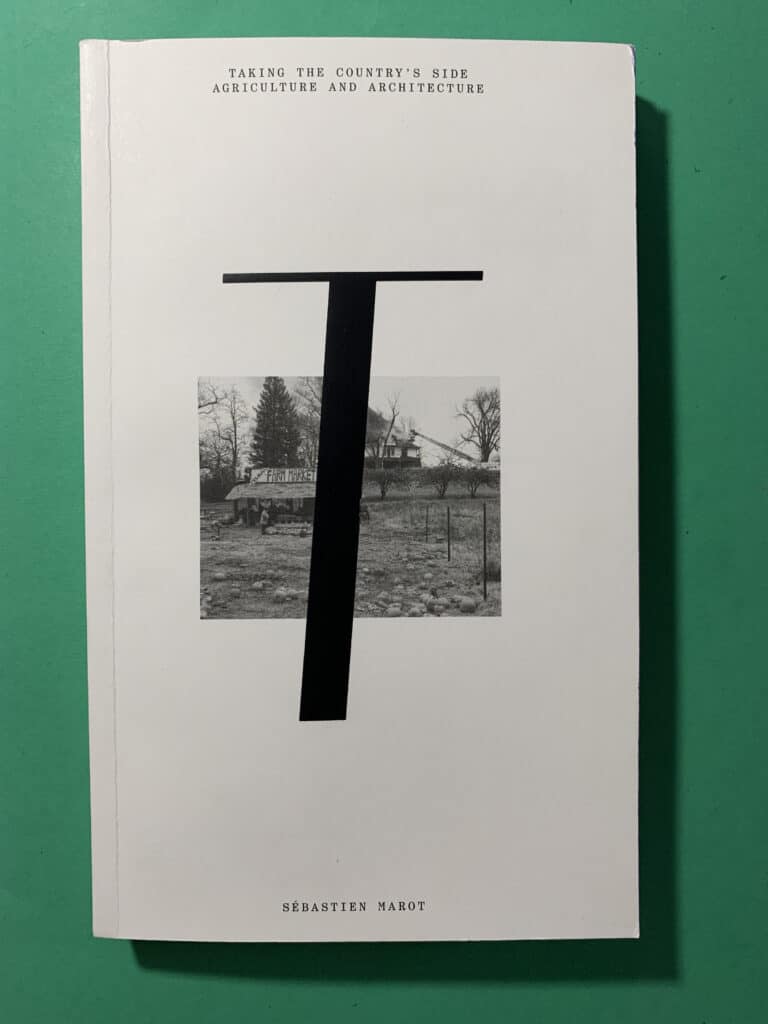
Review
On the occasion of the publication of this book, and the associated exhibition, which was a part of the Lisbon Architecture Triennale of 2019, Sébastien Marot gave a talk that positioned his work about the Country’s Side in relation to Rem Koolhaas’s almost contemporaneous Guggenheim exhibition, Countryside. Marot was intended to be a collaborator on Countryside, he previously contributed to Koolhaas’s Fundamentals at the 14th Venice Biennale, but he decided to step away from Koolhaas’s project in order to set out his own, subtler and more considered position, based on his substantial and longstanding engagement in the subject. Whereas Koolhaas’s manages, as usual, to combine the rhetorical with the apolitical, describing the ‘interesting situation’ whereby the networks of late capitalism inexorably expand until they eventually cover the surface of the earth, Marot’s argument is more nuanced, avoiding rhetoric and laying out the various routes available to humankind as it negotiates a way in the Anthropocene.
The thesis of the book, one that has informed Marot’s teaching and writing for many years, is ‘that no sound reasoning will develop on the future of agriculture and architecture, which both emerged as the twin fairies of the Neolithic revolution unless those two fields of concerns, and their associated modes of living, are reconnected and fundamentally rethought in conjunction with one another’. When humans became sedentary, and started to cultivate the land, the structures they built to store grain, were the first architecture. In 42 short sections, Marot sets out the histories and implications of these common origins, describing the long trajectory from a common purpose at the start of history, to the situation we find ourselves in today, where late capitalism has severed any balance within, and interconnectedness between these two crucial forms of spatial planning.
The sections of the book are based on the panels of the exhibition, which have been transformed into short chapters that vividly combine text, with captions, illustrations and a few, carefully chosen footnotes. The breadth of subject matter, and the ways in which it weaves different disciplines and times together reminds me of texts by Bruno Latour, managing to implicate the enormous complexity of our times into a narrative whose coherence is allowed to exist alongside stories and situations that cannot be easily reconciled. The argument employs a dizzying range of references that are gripping, witty and informative.
Unlike Koolhaas, the perpetually aroused observer, Marot not only lays out the situation, but also mercifully, comes to some conclusions. The core that underlies the project is Permaculture, the idea that agriculture and architecture both have to be designed, in an integrated way that acknowledges the finite resources of our planet, in ways that balance the social and the material. These ideas have been most clearly written about, and practiced, by Su Dennett and David Holmgren in reference to Melliodora, their settlement in Australia, whose influence Marot has long acknowledged. The final part of the book sets out ‘Four competing narratives on the future relationship of city and country’. In a contemporary spirit, these narratives, while very different in ideology and consequence, are not mutually exclusive, they could all happen in different places, the one does not make the other impossible. Their fundamental difference lies in their attitude towards growth. The first, Incorporation (the highly capitalistic metropolis absorbs agriculture) presupposes technological fixes that will enable growth to continue into the future. The second, Negotiation (agriculture becomes an integral component of urban extensions) is not so different, perhaps the new technologies can be less brutal, but the earth’s surface becomes increasingly occupied by a continuous landscape urbanism. Infiltration (agriculture and horticulture invade the city) is a more pessimistic prognosis, that of agriculture finding place to take root in the hollowed-out fabric of cities, like Detroit and Havana. Finally, Secession (il faut construire l’hacienda) is the vision of permaculture, that one accepts lower, and eventually, no growth, but this does not have to arrive through catastrophe, but can rather be managed incrementally, building political and social support on the basis of early successes. Although he does not say so, this I believe is Marot’s preferred direction, and armed with the concise resource of this book, with its intelligent references and footnotes, the reader is able to start to make their own ways towards this hopeful future.
Taking The Country’s Side, Agriculture and Architecture is published by Poligrafia.
Adam Caruso is a partner of Caruso St John Architects and Professor of Architecture and Construction at ETH Zurich.
Excerpt
